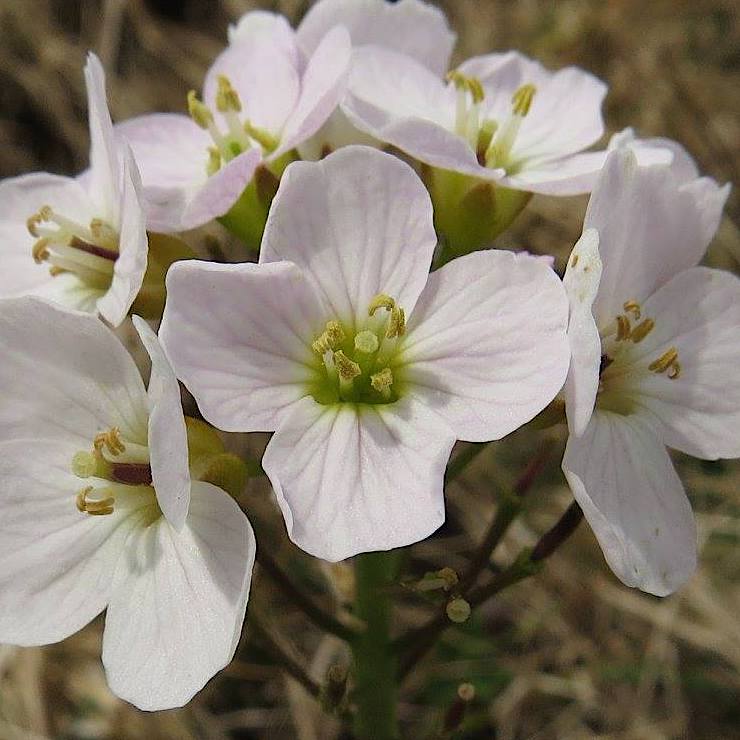
The flushed pink flowers of Cuckooflower can be spotted in damp meadows and on stream banks in the spring.
Photo: Steve Townsend
Scientific name: Cardamine pratensis
Other common names: Lady’s-smock (current and often used as an alternative to Cuckooflower), Milkmaids, Fairy Flower, May Flower
What to look for:
• Family: Brassicaceae (Cabbage, or Crucifer family)
• Flowers: White to rose-pink to mauve (variable), with four petals.
• Leaves and stem: Rosette of leaves at base of upright stem; higher leaves are smaller.
• Height: Up to 60 cm.
• Where: Across the UK, especially in damp meadows, fens, by streams and in damp woodland.
• When: Flowers from April to June.
• Habit: Upright, sometimes with runners.
In folklore, Cuckooflower, or Lady’s-smock, was known as a plant beloved of the fairy folk. If it was woven into a May Day garland by mistake, the entire wreath would have to be remade, otherwise the fairies might get angry.
It is indicative of how widespread this plant with its lovely, pink-flushed flowers is, and how engrained in our country traditions and legends, that it has so many common names. Known scientifically as Cardamine pratensis, Cuckooflower and Lady’s-smock are now the two most used common names. The former refers to its blooming at around the time the first Cuckoos arrive in the spring, and the latter to the shape of the flowers. However, ‘smock’ was also a suggestive and rather derogatory word for a woman, and the name Lady’s-smock is thought to perhaps refer to people enjoying the delights of spring in the meadows!

Did you know…?
…The young leaves of Cuckooflower taste a bit peppery, and can be used in salads as a substitute for cress.
…Cuckooflower is the foodplant of the Orange-tip butterfly.

More information and references:
Baker, M., 1996. Discovering the Folklore of Plants (third edition). Shire Publications, Buckinghamshire.
Mabey, R., 1997. Flora Britannica. Chatto & Windus, London.
Rose, F. and O’Reilly, C., 2006. The Wild Flower Key, 2nd edition. Frederick Warne, London.
Stace, C., 2010. New Flora of the British Isles, 3rd edition. Cambridge University Press, Cambridge.
Published: May 2016
Author: Amanda Scott
Photos: Top – Steve Townsend; middle and lower – Amanda Scott
